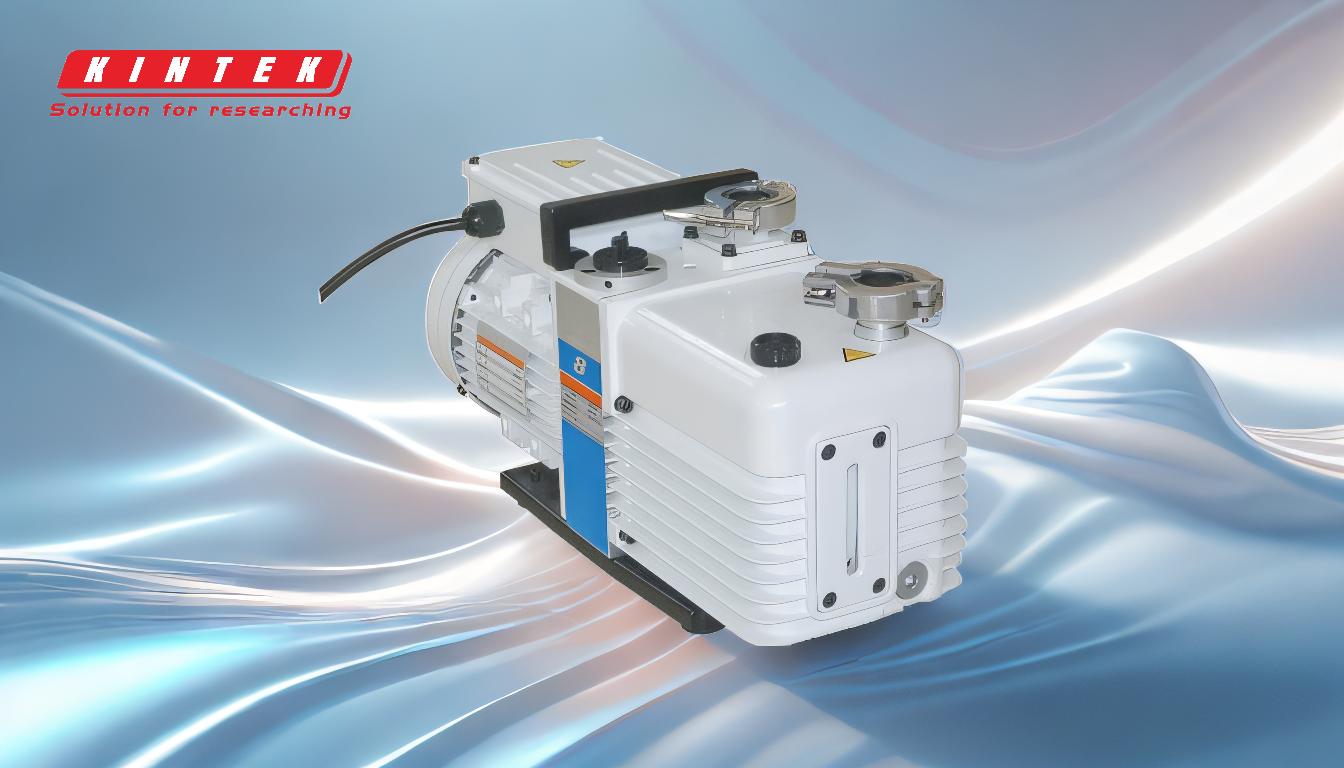A rotary vane pump is a type of positive displacement pump commonly used to achieve medium to high vacuum levels. It operates by trapping gas molecules in chambers created by rotating vanes and expelling them to create a vacuum. The vacuum level achievable by a standard rotary vane pump is typically around 5 × 10^-2 mbar, which is suitable for many laboratory and industrial applications. However, the actual vacuum level depends on factors such as the pump design, operating conditions, and the nature of the gas being pumped. Rotary vane pumps are widely used in chemistry and biology labs due to their reliability and ability to handle moderate gas loads. For applications requiring higher vacuum levels, such as those in semiconductor manufacturing, turbomolecular pumps (capable of achieving 1 × 10^-5 mbar) are often used instead.
Key Points Explained:

-
Vacuum Level of Rotary Vane Pumps:
- Standard rotary vane pumps can achieve a vacuum level of 5 × 10^-2 mbar.
- This level is considered medium vacuum and is sufficient for most laboratory applications, such as distillation, filtration, and degassing.
- Compared to turbomolecular pumps, which can achieve 1 × 10^-5 mbar, rotary vane pumps are better suited for applications that do not require ultra-high vacuum conditions.
-
How Rotary Vane Pumps Work:
- Rotary vane pumps use a rotor with vanes that rotate inside a chamber. The rotor is eccentrically mounted, creating chambers of varying volume as it rotates.
- Gas molecules are trapped in these chambers and expelled through an exhaust port, creating a vacuum.
- The vanes are pressed against the housing by centrifugal force and springs, ensuring a tight seal and efficient compression.
-
Factors Affecting Vacuum Performance:
- Gas Composition: The pumping rate and ultimate vacuum level depend on the type of gas being pumped. Some gases are more easily compressed or trapped than others.
- Pump Design: The clearance between the rotor and housing, as well as the quality of the sealing materials, affects the pump's ability to maintain a vacuum.
- Operating Conditions: Temperature, gas load, and the presence of contaminants can influence the pump's performance.
-
Applications of Rotary Vane Pumps:
- Rotary vane pumps are commonly used in chemistry and biology laboratories for tasks such as solvent evaporation, freeze-drying, and vacuum filtration.
- They are also used in industrial applications, including packaging, degassing, and HVAC systems.
-
Comparison with Other Vacuum Pumps:
- Rotary vane pumps are ideal for medium vacuum applications, while turbomolecular pumps are better suited for ultra-high vacuum environments.
- Rotary piston pumps, another type of positive displacement pump, operate similarly but use a different mechanism involving an eccentric wheel and slide valve. They are often used in applications requiring higher gas throughput.
-
Selection Criteria for Vacuum Pumps:
- When choosing a vacuum pump, consider factors such as the internal volume of the vacuum vessel, the required pressure, and the gas load.
- Operational and process requirements, such as the need for oil-free operation or compatibility with specific gases, also play a role in determining the best pump for a given application.
By understanding the vacuum level and operational principles of rotary vane pumps, users can make informed decisions about their suitability for specific tasks and ensure optimal performance in their applications.
Summary Table:
| Aspect | Details |
|---|---|
| Vacuum Level | 5 × 10^-2 mbar (medium vacuum) |
| Applications | Distillation, filtration, degassing, solvent evaporation, freeze-drying |
| Key Features | Reliable, handles moderate gas loads, suitable for labs and industries |
| Comparison | Ideal for medium vacuum; turbomolecular pumps for ultra-high vacuum |
| Factors Affecting Performance | Gas composition, pump design, operating conditions |
Need help selecting the right vacuum pump for your application? Contact our experts today!



